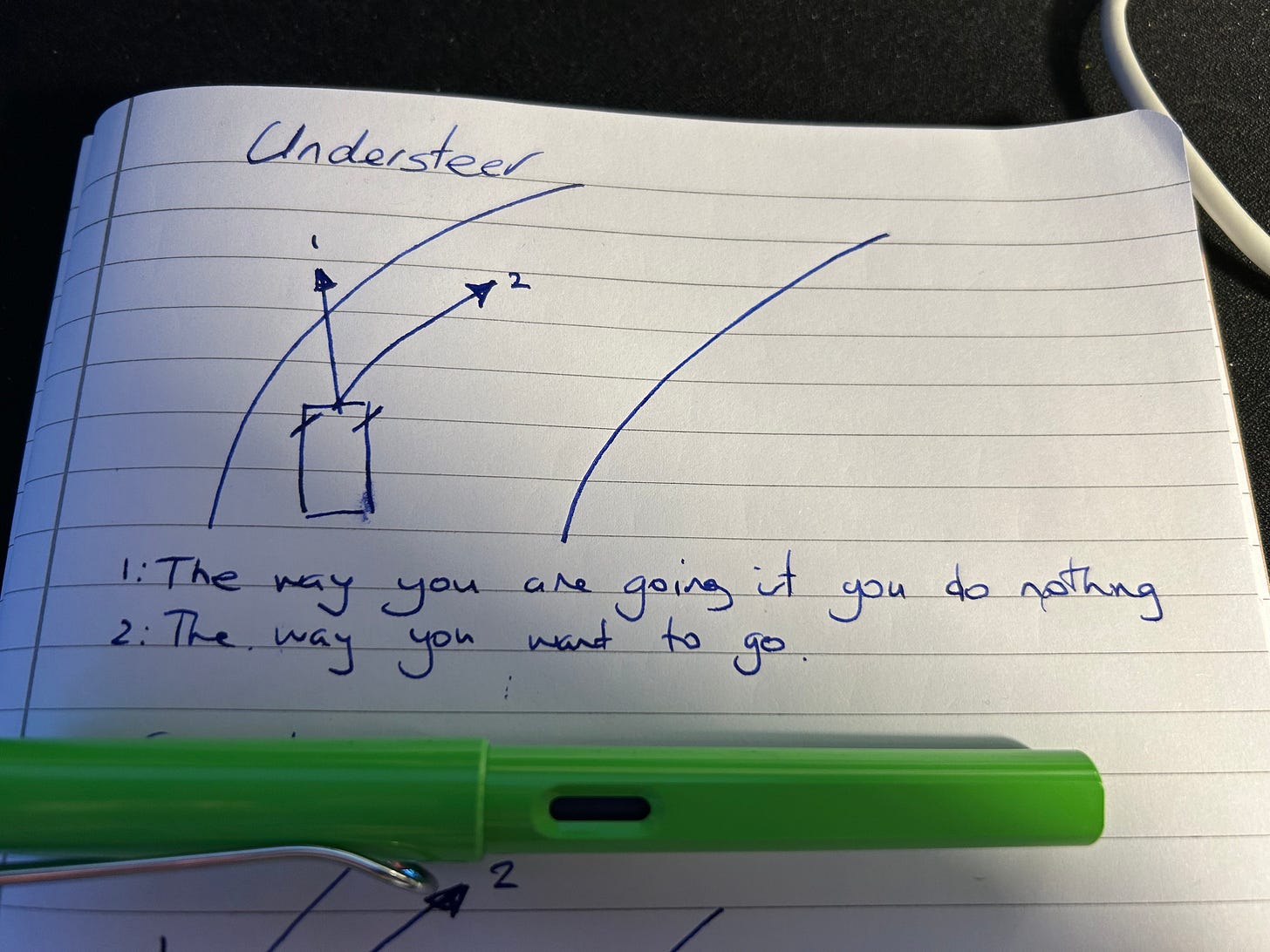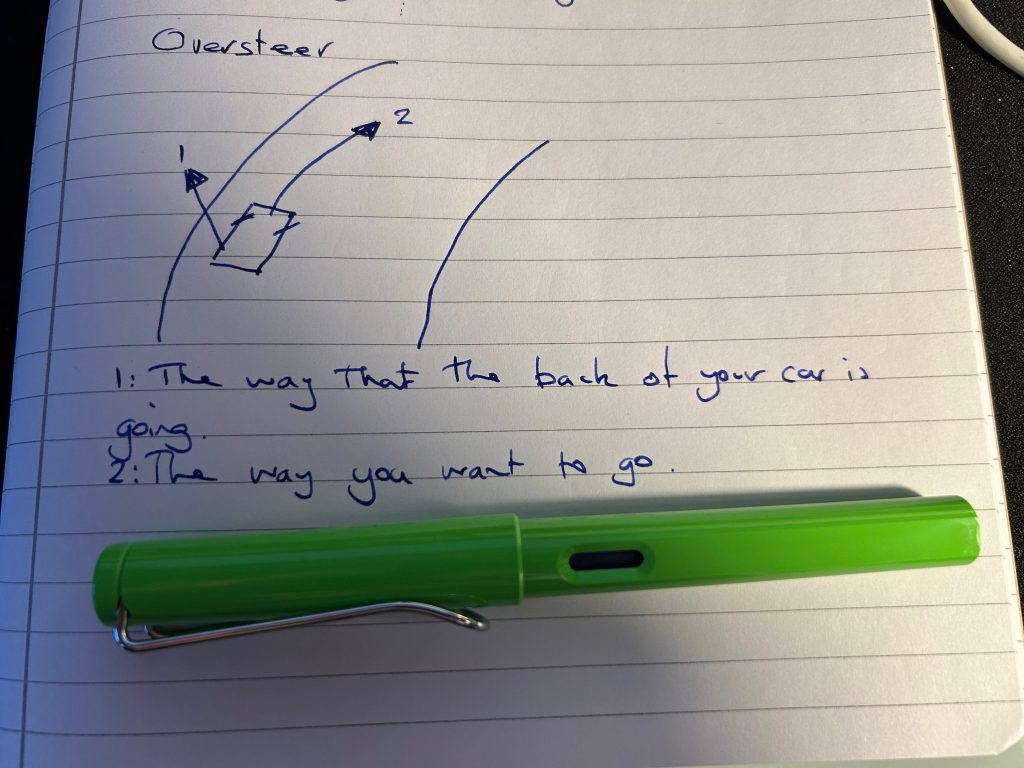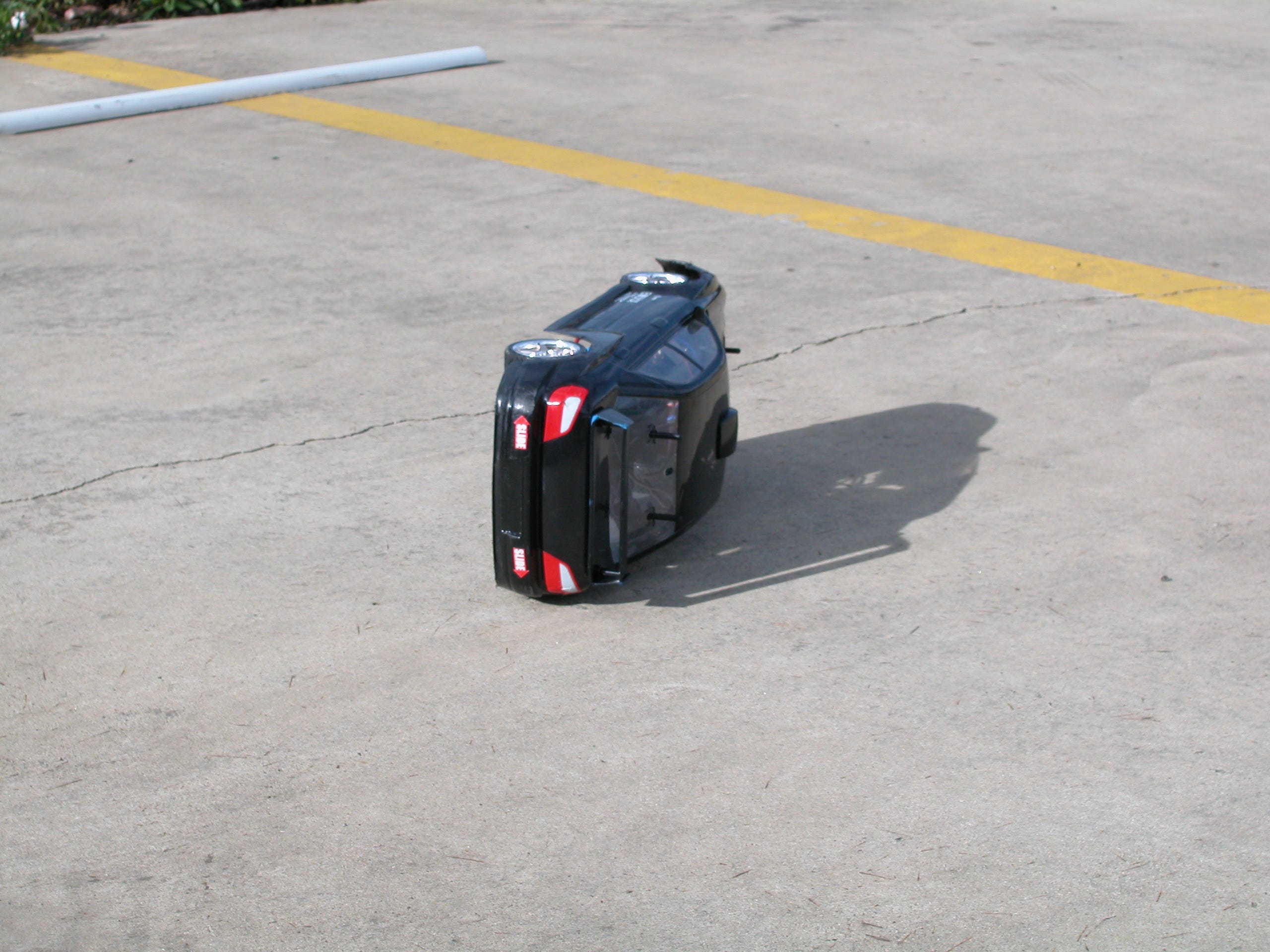Let’s learn what understeer and oversteer are without ending up in a hedge.
This is the first of my Traffic Island Terminology. Unfortunately that does mean that the acronym would be TIT, so I might need to think about that for a while.
*Sits and thinks about TIT for a while.*
Sorry, where was I? Oh yes, I intend to write these occasionally to explain something that maybe is not as universally understood as petrol heads* might believe.
Let’s start with one that you will hear bandied around on certain motoring YouTube and TV shows as well as in the “serious” car press.
Understeer and Oversteer.
Let’s start with understeer, shall we? It is pretty much what it sounds like. When a car has most of the weight at the front, as most modern cars do, when you go into a corner too quickly it will tend to push forwards.

The weight of the engine and/or gearbox in front of the axle means that the weight wants to go straight on when you want it to steer left or right. The solution to this one is quite simple: just gently take your foot off the accelerator and steer in a bit more. The reason that most modern cars are set up like this is because it is generally considered to be the safer setup. Understeer is easier to control than oversteer. A less experienced driver would almost certainly be able to figure it out or at least have enough control to make it around the bend. You might also find this happening at lower speeds at times of lower grip, for example ice, rain or mud.
Oversteer is the opposite, and when controlled, the more fun alternative to understeer. This happens more often to rear wheel drive cars and due to this setup there is power going to the back wheels and there is probably more weight at the back as well.

When you lose grip the back wheels try to go straight on and the back of the car kicks out. I am going to tell you what to do in this situation, but if you are interested to know more I would strongly suggest that you seek professional training.
If you find that the back of the car is sliding out when you are going around the bend, steer in the direction that you want to drive. This is also known as opposite lock.
Not opposite lick, that is well outside of the remit of this article.
If you can modulate, or release the accelerator a bit and gently try to bring the steering back to normal when you regain control. Try to avoid sudden and harsh use of the controls as they will almost certainly unbalance the car and make things worse. I know that remembering these things at the point of your car going sideways towards a hedge might be difficult when it happens, but please do try.
To simplify if you go into a corner too quickly and your car tries to drive you forwards into the hedge that is understeer.
If you go into a corner too quickly and the car tries to drive you backwards into the hedge that is oversteer.
When you learn to control oversteer and hold it for some time that is what people call drifting, or I would call “knacking your tyres.” Those clouds of smoke that you see when someone is drifting? That’s bits of their tyres. Ha ha suckers.
Here is an important point that applies to either. DO NOT BRAKE HARSHLY!
Braking when you are understeering, if you do it gradually, might help. Braking harshly when you are oversteering will almost certainly end with you and two tons of metal pirouetting down the road through a hedge and stopping in a surprised manner in someone’s garden.
If you have any requests for stuff to me explain feel free to comment or email me. I might call this segment “Everyone that you wanted to know about driving but were too scared to ask.”
* Petrol heads is a term synonymous with people who love driving. It is a broad term that can mean someone who watched an episode Top Gear once to someone who sleeps in Ferrari pyjamas.
Of course, as in most hobby areas, some people take things too seriously. You can usually spot them when they start a response with “Well actually…” or “I cannot believe…”.
The correct way to deal with these people is nod politely and back away. It’s the British way.

Leave a Reply